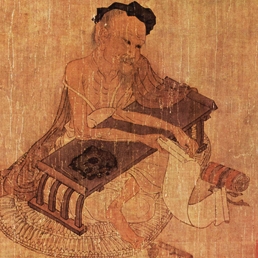In my middle years I love the Tao
and by Deep South Mountain I make my home.
When happy I go alone into the mountains.
Only I understand this joy.
I walk until the water ends, and sit
waiting for the hour when clouds rise.
If I happen to meet an old woodcutter,
I chat with him, laughing and lost to time.
Wang Wei: My Cottage at Deep South Mountain.
The joy of Chinese poetry of this pure kind is that it has a self-sustaining reality. It is the image of a reality whose rhythm imparts to the reader neither a description of things nor a complex symbolism but a state of being, infusing that being to its reader. You enter a new space where subject and object interpenetrate and you sit in the 'suchness' of things as they are.
Accounting for why this is so is at the heart of Chuang-yuan Chang's "Creativity and Taoism: A Study of Chinese Philosophy, Art and Poetry" recently re-published by 'Singing Dragon' (http://www.jkp.com/catalogue/book/9781848190504). It is a masterpiece. A primer in key notions in Chinese philosophy (through a Taoist lens), a comparative study in certain interactions between Taoism, Buddhism and Neo-Confucianism, an original contribution to understanding creativity as such, a penetrating introduction to understanding Chinese poetry and painting; and, a suggestive account of selected parallels between philosophy, East and West: all in 240 pages.
I read it first at university, and subsequently every five years or so, and it opens up new vistas each time.
This time what I most recognized was the sense that art's function is as an opener to being, that it is the rhythm of capturing truth that allows the reader, if they let themselves go into it, to be transformed if only momentarily into new ways of being, revealing to them their 'original state' - the pure consciousness that we are (and which we continuously obscure).
All the birds have flown up and gone;
A lonely cloud floats leisurely by.
We never tire of looking at each other -
Only the mountain and I.
Li Po: Alone Looking at the Mountain

Comments
Post a Comment